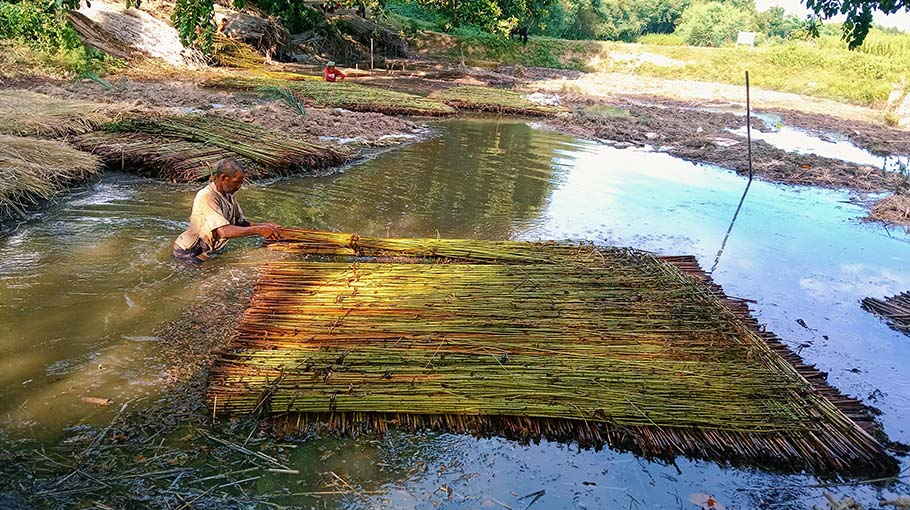Farmers desperate for alternateive water sources due to lack of rain

The farmers in Jhenaidah have been moving here and there in search of water for in order to attend to the rotting jut. There has not been any significant rainfall and hence it is likely to make the jute fibres below standard. This is the apprehension of the farmers and the officials of the department of agriculture extension (DAE) in Jhenaidah.
Farmer Abul Hossain of Kalicharanpur village of Jhenidah Sadar and Rafiqul Alam of Habibpur village in Shailkupa upazila when conatcted said they had reduced their jute farming area in the current season when they had faced a lot of troubles with higher labour charge and wate4r crisis to rot the green jute. The yield was almost good this season and they expected a better profit for the fibre.
But they have been moving here and there loading their green jute on carts and three wheelers for days together. The ditches, ponds, canals and other water bodies became waterless when there was not rainfall in last few months.
When this correspondent visited a number of places to witness the jute rotting activities, saw many of the farmers have been putting huge earth on the top of the jute rotting dumping spots so that the green jute sticks could be remain under water. Due to this sort of activities, the diluted portion of the earth is added with the fibre and making the fibre blackish in colour and below standard. It might be sold at lower prices in the market, they said.
According to a source related to the departament of agriculture extension (DAE) in Jhenaidah , the farmers in Jhenaidah Sadar, Kaliganj, Kotchandpur, Moheshpur, Shailkupa and Harinakundu upazilas produced 62,865 tones of jute fibre on 22,860 hectares of land in the last season at the rate of 2.75 tones of fibre on each hectare.
They have been producing about 62,900 tones of fibre on a total of 22,840 hectares of in the current season, DAE sources said.
DAE Jhenaidah Khamarabari deputy director Asgar Ali when contacted said the drought like weather following the adverse reaction of climate change has changed the nature of rainfall throughout the country. The rainfall, a natural resource was not available in the extreme monsoon this season. The DAE has recorded a total of 26 milimetres of rainfall till July 14, while they had recorded 120 milimetres in June last. This sort of inadequate rainfall was not suitable for jute rotting, deputy director said.
To rot the jute the farmers have been putting earth and some other materials on the jute rotting spots locally known as jaag which has been making the quality sub standard. It will affect the farmers as those jute fibres could not ensure optimum rice for its blackish colour.





